Romania
Welcome to Romania
Romania is a land where ancient legends blend seamlessly with vibrant modern life, where wild mountains meet medieval towns, and where hospitality is not just a custom but a way of life. Whether you’re drawn by the mysterious allure of Dracula’s castle, the serenity of painted monasteries, or the buzz of Bucharest’s nightlife, Romania will surprise and enchant you at every turn. In 2025, the country stands as one of Europe’s most rewarding and accessible destinations, welcoming travelers with open arms and unforgettable experiences.
Nestled in the heart of Eastern Europe, Romania is a country of striking contrasts and hidden treasures. The Carpathian Mountains carve dramatic landscapes across the north and center, while the Danube Delta in the southeast is a paradise for wildlife enthusiasts. Medieval cities like Sibiu and Brașov transport visitors back in time with cobbled streets and fortified churches, while the capital, Bucharest, pulses with energy, creative spirit, and architectural surprises.
Romania’s cultural tapestry is woven from Latin, Slavic, and Ottoman influences, resulting in a unique blend of traditions, languages, and cuisines. The country’s festivals, from the electric beats of Untold to the haunting beauty of Christmas markets, offer a window into its soul. With a cost of living that makes travel affordable and a reputation for safety and warmth, Romania is ideal for solo adventurers, families, and culture seekers alike.
Why Visit Romania?
1.
- Unspoiled Nature and Outdoor Adventures
Romania is a nature lover’s paradise. The Carpathian Mountains offer world-class hiking, skiing, and wildlife spotting, while the Danube Delta is one of Europe’s best bird-watching destinations. From kayaking and caving to relaxing on the Black Sea beaches, the country’s diverse landscapes cater to every type of traveler.
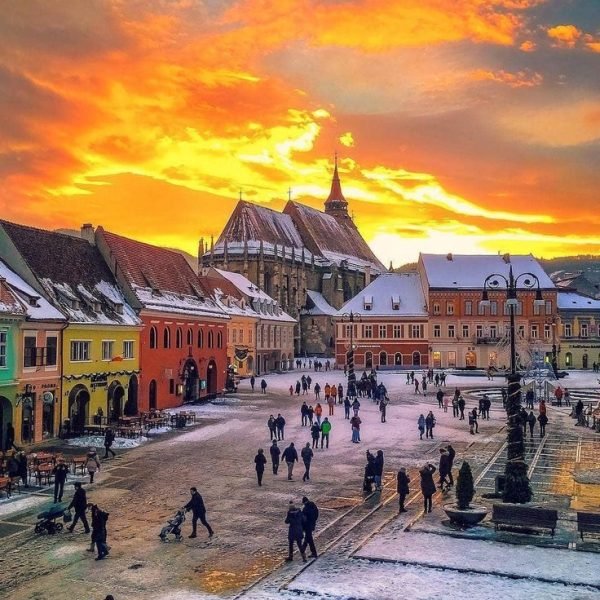
2.
Rich History, Culture, and Warm Hospitality
Step into a world of fairy-tale castles, UNESCO-listed painted monasteries, and medieval towns that feel untouched by time. Romania’s vibrant festivals, hearty cuisine, and welcoming locals make every visit memorable. The country’s deep-rooted traditions and genuine hospitality ensure visitors leave with both incredible memories and new friendships
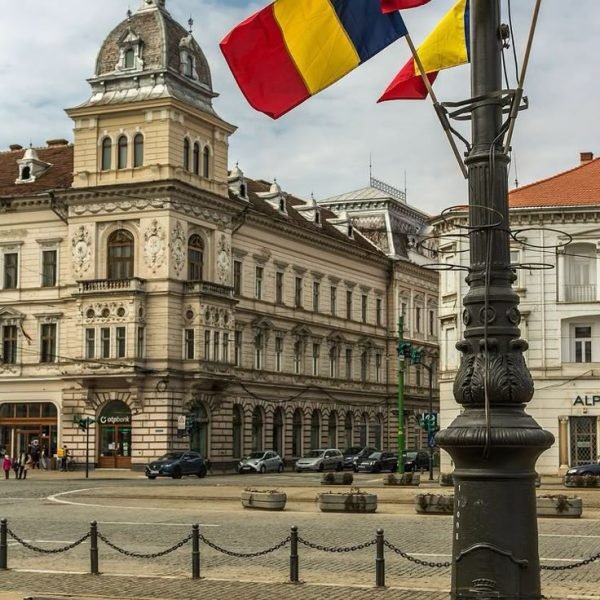
Planning Your Trip
Visa Information
As of January 1, 2025, Romania is part of the Schengen Area, which simplifies travel for many visitors. Citizens of EU and Schengen countries can enter Romania with just a national ID or passport and move freely. Travelers from the US, Canada, Australia, and many other countries can visit for up to 90 days within a 180-day period without a visa. However, always check the latest requirements before your trip, as regulations can change. For longer stays, work, or study purposes, you may need to apply for a specific visa in advance.
Best Time to Visit
Romania is a year-round destination, with each season offering distinct experiences:
- Spring (April–June): Nature awakens, wildflowers bloom in the mountains, and tourist sites are less crowded. This is a great time for city breaks and countryside exploration.
- Summer (July–August): Warm weather and long days are perfect for hiking, festivals, and beach trips to the Black Sea. It’s also the busiest season, especially in popular spots like Transylvania and coastal resorts.
- Autumn (September–October): The Carpathians are ablaze with fall colors, and vineyards host harvest festivals. The weather is mild, and crowds thin out, making it ideal for road trips and cultural events.
- Winter (November–March): Ski resorts in the Carpathians come alive, and Christmas markets in cities like Sibiu and Brașov are magical. Rural areas celebrate unique winter traditions, and prices are generally lower outside the holidays.
Getting To and Around
Getting to Romania
Romania is well-connected to the rest of Europe and beyond:
- By Air: Bucharest Henri Coandă International Airport (OTP) is the main gateway, with direct flights from major European cities and some intercontinental routes. Other international airports include Cluj-Napoca, Timișoara, Iași, and Sibiu, offering regional connections.
- By Train: International trains link Romania with Hungary, Bulgaria, Austria, and other neighboring countries. The rail network is extensive but can be slow; overnight trains are a comfortable option for longer journeys.
- By Road: With the lifting of border controls with Hungary and Bulgaria in 2025, driving into Romania is easier than ever. Major highways connect with the European road network, but expect varied road conditions in rural areas.
- By Boat: River cruises on the Danube often include stops in Romania, particularly in the port city of Tulcea, gateway to the Danube Delta.
Getting Around Romania
- Trains: The national rail system (CFR) covers most cities and towns. Trains are affordable and scenic, though not always the fastest option. For major routes, InterCity and Regio trains are recommended.
- Buses and Coaches: Intercity buses and minibuses fill gaps in the rail network and are often the quickest way to reach smaller towns and villages.
- Car Rental: Renting a car offers the greatest flexibility, especially for exploring rural regions, the mountains, and the Transfăgărășan or Transalpina scenic roads. Roads in cities and main highways are good, but rural roads can be narrow and winding.
- Public Transport in Cities: Bucharest, Cluj-Napoca, Timișoara, and other cities have efficient public transport systems, including buses, trams, and metro (in Bucharest). Taxis and ride-sharing apps are widely available and affordable.
- Cycling: Increasingly popular, especially in Transylvania and the Danube Delta, with dedicated bike routes and rentals in tourist areas.

Accommodation
Romania offers a wide spectrum of accommodation options that cater to every traveler’s preference and budget, ranging from luxurious five-star hotels to cozy guesthouses and affordable hostels. Whether you’re visiting the bustling capital Bucharest, the medieval charm of Transylvania, or the serene Danube Delta, you will find places to stay that combine comfort, local character, and excellent service.
Hotels and Resorts
For those seeking comfort and convenience, Romania’s major cities and tourist hotspots boast a variety of high-quality hotels. In Bucharest, options like the Park Inn by Radisson and Radisson Blu Hotel in Cluj provide modern amenities including spacious rooms, fitness centers, pools, and excellent dining facilities. These hotels often include breakfast and are praised for their friendly, accommodating staff and central locations, making them ideal bases for exploring the city.
In historic towns such as Sibiu, Sighișoara, and Sinaia, boutique hotels blend rustic charm with modern comforts. For example, Mercure Sighisoara Binderbubi offers Austrian-inspired decor and spacious rooms close to the Old Town, while Hotel International Sinaia features recently renovated rooms with scenic mountain views and on-site restaurants. Many of these hotels provide spa services, indoor pools, and wellness facilities, perfect for relaxing after a day of sightseeing or hiking.
Budget and Mid-Range Accommodation
Romania is well-known for its affordability, and travelers on a budget will find a wealth of options. Hostels and guesthouses are plentiful, especially in university towns like Cluj-Napoca and Timișoara, offering clean, simple rooms with shared facilities. These are popular among backpackers and young travelers looking to meet others and experience local culture.
Private apartments and self-catering studios are also widely available for rent, often through real estate agencies or online platforms. This option is particularly popular with families or groups seeking more space and flexibility. Student accommodations, including dormitories and shared apartments, provide affordable stays in university cities, often with easy access to public transport and local amenities.
All-Inclusive Resorts
For travelers looking for a hassle-free vacation, all-inclusive resorts along the Black Sea coast offer excellent value. Resorts like Mera Resort and Complex Hotelier Steaua de Mare provide pools, gyms, and a range of dining options included in the price, making them a favorite for families and beach lovers. These resorts combine leisure with convenience, often featuring private beaches and children’s activities.
Unique Stays
For a more authentic experience, consider staying in rural guesthouses or traditional inns, especially in regions like Maramureș or Bucovina. These accommodations often feature traditional architecture and home-cooked meals, offering a glimpse into Romanian village life. Some mountain lodges provide cozy rooms with stunning views of the Carpathians, ideal for nature lovers and hikers.
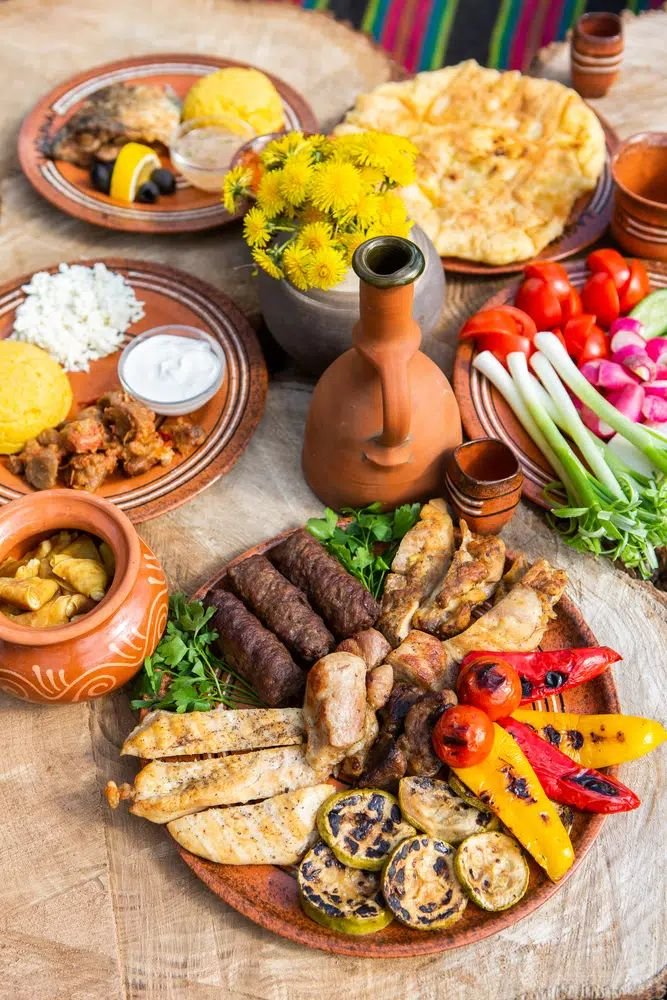
Food and Drink
Romanian cuisine is a rich tapestry of flavors influenced by its diverse history and geography. It is hearty, comforting, and deeply connected to local traditions and seasonal ingredients. Whether dining in a fine restaurant or sampling street food, Romania’s culinary offerings are sure to delight your palate.
Traditional Romanian Dishes
Romanian food is characterized by its use of fresh vegetables, meats, dairy, and herbs. Staples include mămăligă (a cornmeal porridge similar to polenta), often served with sour cream and cheese, and sarmale – cabbage rolls stuffed with minced pork and rice, slow-cooked in a tomato sauce. Another beloved dish is ciorbă de burtă, a rich tripe soup with a tangy sour cream base.
Grilled meats and sausages (mititei or mici) are popular street food, especially in summer markets and festivals. These small, spiced skinless sausages are usually served with mustard and fresh bread. For a sweet finish, try papanasi – fried doughnuts filled with sweet cheese and topped with sour cream and jam.
Regional Specialties
Each region of Romania has its own culinary highlights. In Transylvania, you’ll find influences from Hungarian and Saxon cuisines, such as gulaș (a paprika-spiced stew) and kürtőskalács (chimney cake). The Moldavia region is famous for plăcintă, a flaky pastry filled with cheese, apples, or pumpkin.
Along the Black Sea coast, fresh seafood like fish and shellfish feature prominently, often grilled or prepared in stews. The Danube Delta offers unique dishes using local fish varieties, such as saramură (smoked fish in brine) and borș (a sour fish soup).
Drinks and Beverages
Romania boasts a growing wine industry with several renowned wine regions, including Dealu Mare, Murfatlar, and Cotnari. Romanian wines, especially reds and whites made from indigenous grape varieties, are gaining international recognition for their quality and character. Wine tasting tours are popular and offer a chance to sample local vintages paired with traditional foods.
For a non-alcoholic option, try socată, a homemade elderflower cordial, or vișinată, a sweet cherry liqueur often made at home but also available commercially. Romanian beer is widely consumed, with both international brands and local craft breweries offering a variety of lagers and ales.
Dining Out
Romanian cities have vibrant dining scenes ranging from traditional taverns (crâșme) to modern bistros and international cuisine. In Bucharest and Cluj, you’ll find innovative chefs blending Romanian ingredients with contemporary techniques, while smaller towns often feature family-run restaurants serving hearty, authentic meals.
Meals are typically enjoyed leisurely, with an emphasis on hospitality and sharing. It’s common to start with an appetizer platter (platou rece), followed by a main course and dessert. Many restaurants offer menus in English and are welcoming to tourists.
Street Food and Markets
For a quick and flavorful bite, street food stalls and markets are excellent places to explore. Seasonal fruits, nuts, cheeses, and pastries are abundant. Markets also provide a great opportunity to try local specialties and interact with Romanian vendors.
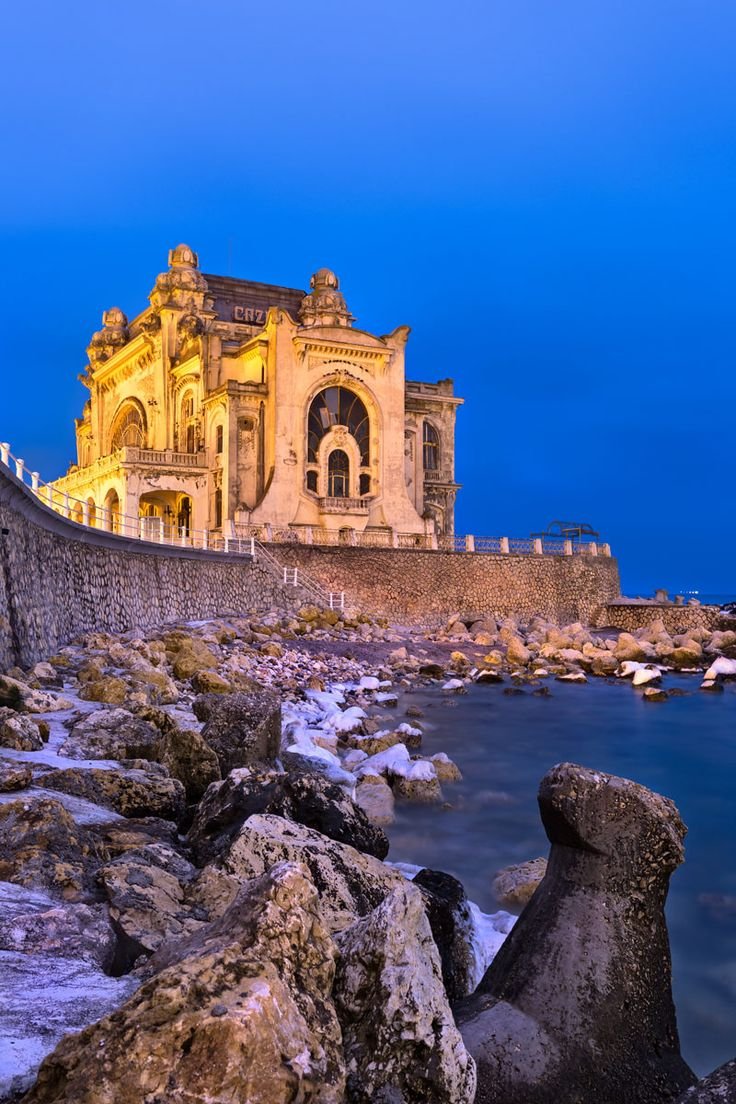
Must-See Attractions
- Peleș Castle (Sinaia)
Often hailed as one of Europe’s most beautiful castles, Peleș Castle is a neo-Renaissance masterpiece nestled in the Carpathian Mountains. Once the summer residence of Romanian royalty, the castle boasts opulent interiors, intricate woodwork, and an extensive art collection. Its scenic forested surroundings make it a perfect starting point for exploring the mountain town of Sinaia. - Bran Castle (Transylvania)
Known worldwide as “Dracula’s Castle,” Bran Castle is a medieval fortress perched dramatically on a cliff. While the connection to Vlad the Impaler-the real-life inspiration for Dracula-is more legend than fact, the castle’s Gothic architecture and eerie atmosphere captivate visitors. The museum inside offers insights into Romanian history and the life of Queen Maria. - Sighişoara Citadel
This UNESCO World Heritage Site is one of the best-preserved medieval towns in Europe and the birthplace of Vlad the Impaler. Walking through its cobbled streets, colorful houses, and past the iconic Clock Tower feels like stepping back in time. The citadel hosts an annual Medieval Festival that brings history to life with music, crafts, and reenactments. - Brașov
Set against the backdrop of the Carpathians, Brașov is a picturesque city with a charming medieval old town. Key sights include the Black Church, the largest Gothic church in Romania, and Mount Tâmpa, accessible by cable car, offering panoramic views of the city and surrounding mountains. Brașov is also a gateway to nearby castles and hiking trails. - Palace of Parliament (Bucharest)
One of the largest administrative buildings in the world, the Palace of Parliament is a monumental symbol of Romania’s communist past. Its vast halls and opulent interiors are a stark contrast to the city’s modern vibe. Guided tours reveal fascinating stories behind its construction and political history. - Transfăgărășan Highway
Dubbed one of the best driving roads globally, this winding mountain highway cuts through the Făgăraș Mountains with dramatic hairpin turns and breathtaking vistas. It’s a must-see for road trip enthusiasts and offers access to hiking trails, glacial lakes, and historic sites like Poenari Citadel. - Salina Turda
This unique attraction is a former salt mine transformed into an underground amusement park. Visitors can explore vast caverns, ride a Ferris wheel, row boats on an underground lake, and learn about the mine’s history. It’s a surreal experience combining natural wonder with human ingenuity. - Danube Delta
A UNESCO Biosphere Reserve, the Danube Delta is one of Europe’s last wilderness areas. It features a labyrinth of waterways, floating reed islands, and an incredible diversity of bird species. Boat tours offer intimate encounters with nature, fishing opportunities, and peaceful escapes from urban life. - Merry Cemetery (Săpânța)
Unlike any other cemetery, this site is famous for its colorful tombstones decorated with vivid paintings and humorous epitaphs celebrating the deceased’s life. It reflects a unique local tradition of embracing life and death with humor and positivity. - Sibiu
Known for its Saxon architecture and medieval towers, Sibiu is a cultural hub with museums, galleries, and the open-air ASTRA Folk Museum showcasing Romanian rural life. The city’s lively squares and festivals make it a great destination for history and culture lovers.
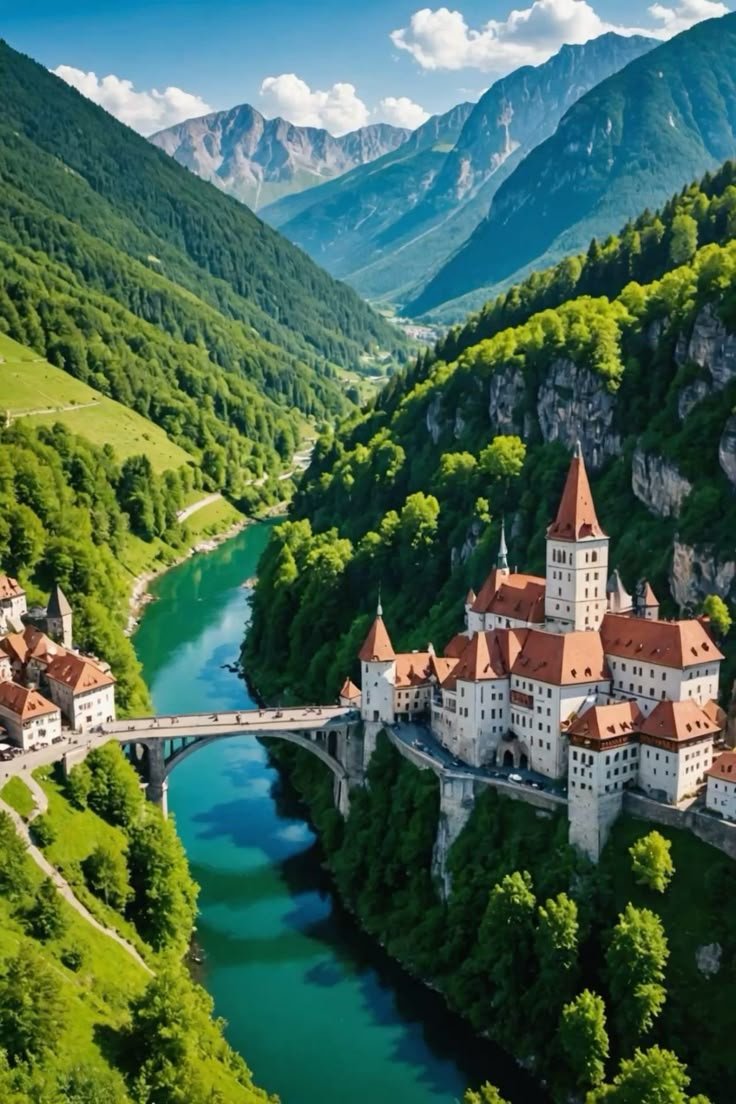
Must-Do Activities
- Explore the Via Transilvanica Trail
Stretching over 1,400 kilometers, the Via Transilvanica is Romania’s newest long-distance hiking trail. It traverses diverse landscapes from the northern mountains to the Danube River in the south, passing through villages, forests, and historic sites. This trail offers an immersive way to experience Romania’s natural beauty and cultural heritage on foot. - Discover Medieval Towns and Fortresses
Spend time wandering through the fortified towns of Transylvania-such as Sighişoara, Sibiu, and Brașov-where medieval walls, towers, and cobblestone streets tell stories of centuries past. Visit fortresses like Râșnov and Făgăraș to delve deeper into Romania’s defensive architecture and history. - Drive the Transfăgărășan Highway
For thrill-seekers and scenic lovers, driving this spectacular mountain road is a must. The route offers jaw-dropping views, stops at glacial lakes like Bâlea Lake, and access to hiking paths. It’s an exhilarating experience that combines adventure with nature. - Experience Romanian Festivals
Romania’s calendar is packed with vibrant festivals celebrating everything from medieval history to folk traditions and music. The Medieval Festival in Sighişoara, the Astra Folk Festival in Sibiu, and the Untold Festival in Cluj-Napoca are highlights that showcase the country’s lively cultural scene. - Wildlife Watching in the Danube Delta
Join a guided boat tour to spot rare birds like pelicans, herons, and eagles, as well as other wildlife such as otters and wild horses. The delta’s tranquil waterways offer a unique opportunity for nature photography and peaceful exploration. - Visit the Salt Mines and Caves
Beyond Salina Turda, explore other natural wonders like the Scărișoara Glacier Cave, home to Romania’s largest underground glacier. These sites offer fascinating geological insights and cool retreats in summer. - Sample Traditional Romanian Cuisine
Engage in culinary experiences by tasting local dishes such as sarmale(cabbage rolls), mămăligă(cornmeal porridge), and mititei (grilled sausages). Many towns have traditional restaurants or family-run guesthouses where you can enjoy authentic meals paired with Romanian wines. - Explore Bucharest’s Old Town and Museums
While Bucharest’s Old Town is lively with bars and restaurants, it also offers historical gems like Stavropoleos Monastery and the National Museum of Art. Take a walking tour to learn about the city’s complex history and evolving culture. - Hiking and Skiing in the Carpathians
The Carpathian Mountains provide excellent opportunities for outdoor enthusiasts. In summer, hiking trails lead through pristine forests and alpine meadows. In winter, resorts like Poiana Brașov offer skiing and snowboarding with modern facilities. - Visit the Merry Cemetery and Rural Villages
For a cultural and off-the-beaten-path experience, visit the Merry Cemetery in Săpânța and nearby traditional villages. Here, you can witness unique customs, colorful wooden churches, and warm rural hospitality.
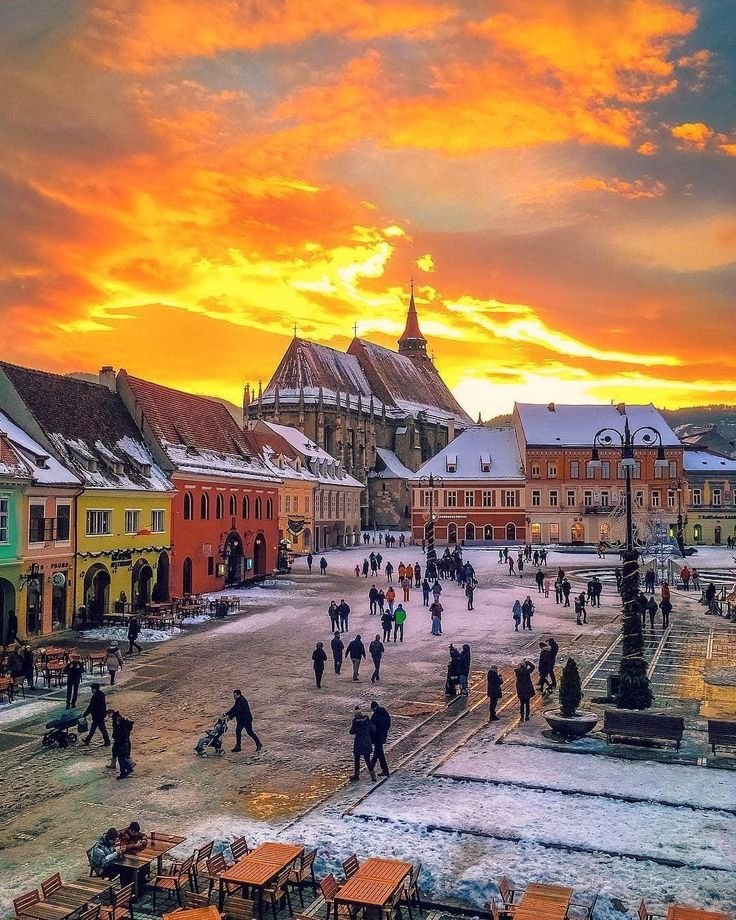
Travel Tips
Romania in 2025 is a destination where old-world charm meets modern convenience, offering travelers a safe, welcoming, and culturally rich experience. To make the most of your journey, it’s important to understand the latest safety advice, appreciate local customs, and familiarize yourself with basic language essentials. Here’s a comprehensive guide to help you travel smart, respectfully, and confidently.
Safety Advice
General Safety Overview
Romania is widely regarded as a safe country for international travelers, ranking among the top 30 safest nations globally. Crime rates are low, especially in tourist-frequented cities and towns. Most visitors enjoy trouble-free trips, but as with any destination, exercising common sense and staying alert is key to a smooth experience.
Petty Crime and Scams
- Pickpocketing: The most common risk is petty theft, particularly in busy urban centers like Bucharest or at popular tourist attractions. Pickpockets often operate in crowded areas, public transport, and markets. Keep your valuables secure, use anti-theft bags, and avoid displaying expensive items.
- Scams: Be cautious of strangers offering unsolicited help or overly friendly individuals in tourist zones. Always use official taxis or reputable ride-sharing apps, and agree on fares before starting your journey.
Accommodation and Transport Safety
- Accommodation: Choose hotels or guesthouses in well-reviewed, central neighborhoods. Opt for properties with 24-hour security, CCTV, and positive guest feedback on safety.
- Transport: Public transport is generally safe and reliable. When using taxis, stick to licensed companies or ride-sharing apps. If you rent a car, drive carefully-Romanian roads can be narrow or winding, especially in rural areas. Always wear your seatbelt and avoid driving at night in poorly lit regions.
Health and Emergency Services
- Healthcare: Major cities have modern hospitals and clinics. In remote areas, medical facilities may be limited, so carry essential medications and a basic first-aid kit. Travel insurance with medical coverage is strongly recommended.
- Vaccinations: Check with your doctor about recommended vaccines before traveling, and stay updated on health advisories, such as measles outbreaks.
Solo and Female Travelers
Romania is considered safe for solo and female travelers. The locals are known for their hospitality and willingness to help visitors. However, as everywhere, it’s wise to avoid walking alone late at night in unfamiliar or poorly lit areas, and to trust your instincts if a situation feels uncomfortable.
Natural Hazards
If you’re hiking or exploring rural regions, be prepared for changing weather and limited services. Carry water, snacks, and a charged phone. In the Carpathians, stick to marked trails and check local conditions before setting out.
Money and Payments
Credit and debit cards are widely accepted in cities, shops, restaurants, and hotels. However, carry some cash for small purchases, rural areas, or markets where card payments may not be possible.
Local Customs
Greetings and Social Etiquette
- Greetings: A friendly “Bună ziua” (Good day) or “Salut” (Hello) goes a long way. Romanians appreciate politeness and a warm greeting, especially when entering shops or restaurants.
- Punctuality: Being on time is considered respectful, especially for business meetings or formal occasions.
- Personal Space: Romanians are friendly but value personal space. A handshake is the standard greeting; close friends may exchange cheek kisses.
Dress and Behavior
- Religious Sites: Dress modestly when visiting churches or monasteries. Cover shoulders and knees, and speak quietly to respect worshippers.
- Shoes: In some homes, it’s customary to remove shoes upon entering. If in doubt, follow your host’s lead.
- Public Behavior: Romanians appreciate courtesy and good manners. Loud or disruptive behavior, especially in public places or religious sites, is frowned upon.
Dining and Drinking
- Toasts: When dining with locals, wait for the host to propose a toast before drinking. The traditional toast is “Noroc!” (Cheers!). Make eye contact when clinking glasses.
- Tipping: Tipping is customary-around 10% in restaurants and for taxi drivers or hotel staff.
- Smoking: Smoking is banned in all indoor public spaces, including restaurants and bars. Fines apply for violations.
Photography
Always ask permission before photographing people, especially in rural areas or during religious ceremonies. Some sites may prohibit photography inside, so look for signs or ask staff.
Festivals and Holidays
Romania’s calendar is filled with vibrant festivals and religious holidays. During Orthodox Easter or Christmas, many shops and services may close or operate on limited hours. Participating in local festivities is a great way to experience Romanian culture.
Language Basics
Romanian is a Romance language, closely related to Italian, French, and Spanish. English is widely spoken in major cities, hotels, and tourist areas, especially among younger people. However, learning a few key phrases will enrich your interactions and demonstrate respect for local culture.
Essential Romanian Phrases
- Hello: Bună ziua (boo-nuh zee-wah) / Salut (sah-loot)
- Goodbye: La revedere (lah reh-veh-deh-reh)
- Please: Vă rog (vuh rogh)
- Thank you: Mulțumesc (mool-tsoo-mesk)
- Yes: Da (dah)
- No: Nu (noo)
- Excuse me / Sorry: Scuzați-mă (skoo-zahts-ee-muh)
- Do you speak English?: Vorbiți engleză? (vor-beets en-gleh-zuh)
- How much does it cost?: Cât costă? (kut kos-tuh)
- Where is…?: Unde este…? (oon-deh yeh-steh)
- Help!: Ajutor! (ah-zhoo-tor)
Numbers (1–5)
- 1: unu (oo-noo)
- 2: doi (doy)
- 3: trei (trey)
- 4: patru (pah-troo)
- 5: cinci (cheench)
Signs and Notices
Look out for signs such as “Intrare” (Entrance), “Ieşire” (Exit), “Deschis” (Open), and “Închis” (Closed).
Communication Tips
- Speak slowly and clearly if using English.
- Use gestures or write things down if there’s a language barrier.
Romanians appreciate any effort to speak their language, even if it’s just a greeting or thank you.
Final Tips for a Smooth Journey
Romania in 2025 is a safe, welcoming, and culturally fascinating country for travelers. By following basic safety precautions, respecting local customs, and learning a few Romanian phrases, you’ll not only ensure a smooth trip but also connect more deeply with the people and places you encounter. Embrace the warmth, beauty, and traditions of Romania, and you’ll leave with memories-and friendships-that last a lifetime.

